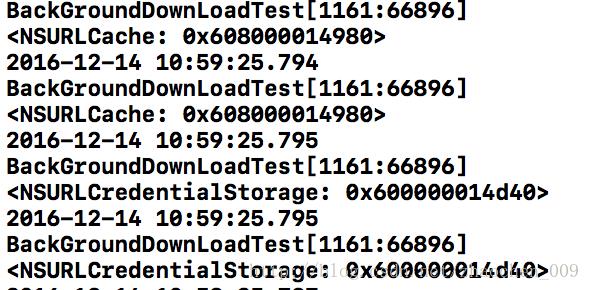通过NSURLSessionConfiguration对类属性property(class)的思考
Posted WoodBear009
tags:
篇首语:本文由小常识网(cha138.com)小编为大家整理,主要介绍了通过NSURLSessionConfiguration对类属性property(class)的思考相关的知识,希望对你有一定的参考价值。
在查看NSURLSessionConfiguration的头文件时看到了如下的定义
#if FOUNDATION_SWIFT_SDK_EPOCH_AT_LEAST(8)
@property (class, readonly, strong) NSURLSessionConfiguration *defaultSessionConfiguration;
@property (class, readonly, strong) NSURLSessionConfiguration *ephemeralSessionConfiguration;
#endif@property (class)的写法使我不禁想起了前一阵看的一篇文章 点击打开链接,了解到了ios新增了对类属性的支持,里面还举了实例,演示如何去定义实现类属性
文中提到了由于类属性是类级别的而不是实例变量,所以把它们声明为静态的,后面它的实例代码也都是以类属性应为静态的前提下编写的,今天看到了NSURLSessionConfiguration也有两个类属性defaultSessionConfiguration、ephemeralSessionConfiguration,于是决定验证一下文章的说法,结果发现
NSURLSessionConfiguration *config1 = [NSURLSessionConfiguration defaultSessionConfiguration];
NSURLSessionConfiguration *config2 = [NSURLSessionConfiguration defaultSessionConfiguration];
config1与config2的地址并不一致, defaultSessionConfiguration应该并不是静态变量
* The shared session uses the global singleton credential, cache
* and cookie storage objects.
*
* An ephemeral session has no persistent disk storage for cookies,
* cache or credentials.
NSLog(@"%@",config1.URLCache);
NSLog(@"%@",config2.URLCache);
NSLog(@"%@",config1.URLCredentialStorage);
NSLog(@"%@",config2.URLCredentialStorage);
它们的URLCache、URLCredentialStorage对象都是一样的
所以我觉得它们的内部实现应该是类似这样的:
#import <Foundation/Foundation.h>
@interface MyURLSessionConfiguration : NSObject
@property (class,readonly,strong) MyURLSessionConfiguration *defaultSessionConfiguration;
@property (strong) NSURLCache *URLCache;
@end#import "MyURLSessionConfiguration.h"
@implementation MyURLSessionConfiguration
+(MyURLSessionConfiguration *)defaultSessionConfiguration
//MyURLSessionConfiguration每次都分配新的
MyURLSessionConfiguration *configuration = [[MyURLSessionConfiguration alloc] init];
//但URLCache都统一分配统一对象(NSURLCache单例)
configuration.URLCache = [NSURLCache sharedURLCache];
return configuration;
@endMyURLSessionConfiguration *config1 = [MyURLSessionConfiguration defaultSessionConfiguration];
MyURLSessionConfiguration *config2 = [MyURLSessionConfiguration defaultSessionConfiguration];
NSLog(@"%@,%@",config1,config1.URLCache);
NSLog(@"%@,%@",config2,config2.URLCache);
思考总结:
类属性的出现,从语法层面上对类一层级上属性的定义提供了支持,是从类级别上一种对属性定义和控制的方式,但具体如何去控制和使用,看实际需求是十分灵活的。没有规定说类属性就一定要是所有类实例对应同一个属性对象,与static更没有必然的联系。
如上面的例子中,通过类属性,虽然每次生成的SessionConfiguration都不一样,但却很好的控制了所有生成的SessionConfiguration对象都绑定了同一个cache实例。
以上是关于通过NSURLSessionConfiguration对类属性property(class)的思考的主要内容,如果未能解决你的问题,请参考以下文章